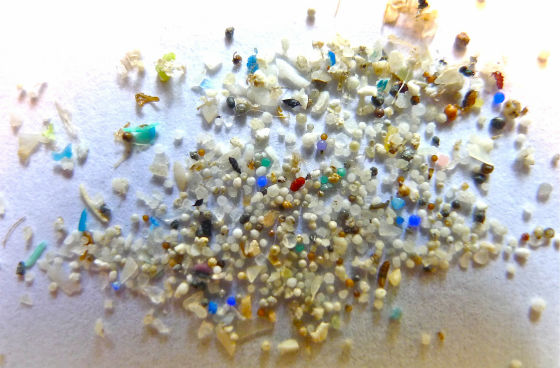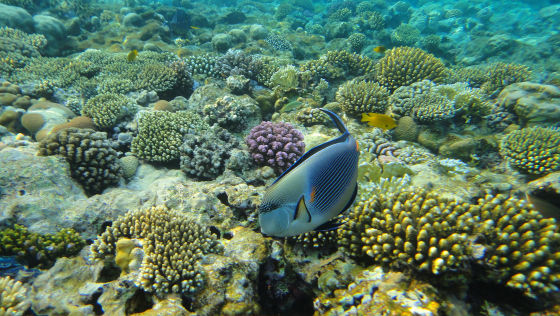The possibility that a microscopic "microplastic" issued by a human being hinders the growth of fish

ByFrank_am_Main
Recycling Many plastics that were not recovered will flow down to the river and the sea and the size will gradually decrease, and particles of 5 mm or less willMicro PlasticIt is called eating fish and shellfish and it is one of the environmental problems. In a survey of Uppsala University in Sweden, we found that the higher the density of microplastic, the more harmful the living things grew up with that water quality.
Environmentally relevant concentrations of microplastic particles influence larval fish ecology | Science
http://science.sciencemag.org/content/352/6290/1213
Fish raised with plastic debris eat it instead of food-then become food themselves | Ars Technica
http://arstechnica.com/science/2016/06/fish-raised-with-plastic-debris-eat-it-instead-of-food-then-become-food-themselves/
When Uppsala University was conducting a sampling study of zooplankton along the coast of Sweden, as many as 100,200 microplastic were found per cubic meter. There is a possibility that seafood inhabiting the survey area may be drinking many microplastic, and the investigation team started investigating how it affects the seafood that ate the microplastic.

ByOregon State University
"Including microplastic", "Including 10,000 microplastic per cubic meter, which is regarded as average in the survey area", "Including 80,000 plastics per cubic meter" is included in the seawater of three water quality, Suzuki's egg A survey was conducted to put in and observe. As a result, 96% of the eggs hatched in seawater not containing microplastic, only 81% of the eggs did not hatch in seawater containing 80,000 plastics per cubic meter, resulting in the lowest result among the three water quality , The survey team says that micro plastics may have hindered the hatching of eggs.
When hatching and one week passed, changes began to be seen in the fry in each aquarium. Larvae of seawater including microplastic turned out to be dramatically less moving distance and behavior than seawater fry in microplastic.
In addition, it became clear that the growth of frying fish slowed as the density of microplastic became 2 weeks after hatching. Among the fish grown in three water quality seawater, the fastest growing, the smallest was the larvae raised in seawater containing 80 thousand plastics per cubic meter, the largest being microplastic It was a fry raised in seawater, the difference was 0.9 mm.

ByArtur
According to the survey team, the fish raised with high density microplastic will consume a lot of microplastic and tend to prefer microplastic rather than ordinary fish feed. Also, as microplastic density increases, it is natural that intake of microplastic increases, which is said to have a negative effect on the growth speed of fry fish.
Microplastic has been regarded as a problem in many countries around the world including Japan, and it was also taken up at the G7 Ellmau Summit held in June 2015. In Japan, the Ministry of the Environment went in 2014InvestigationMicroplastic is confirmed at a certain density in the offshore waters of Japan. Also,(PDF)Report issued by the United Nations Environment ProgramAlthough microplastic was thought to be a drifting plastic deterioration initially contained in marine waste, products using microplastic such as toothpaste, washing gel, facial cleanser etc. have been increasing in recent years, and domestic waste water is also used for microplastic It has been pointed out that it is spurring the problem.
It is one of the institutions of the University of TokyoThe University of Tokyo Maritime Alliance"There is also a view that microplastic is overlooking that the amount confirmed on the sea surface is lower than expected and you have missed somewhere. A considerable amount of microplastic is already somewhere in the ocean It may be that I may be sorry. "In Japan as wellIssues that have been largely discussedis.
Related Posts:







